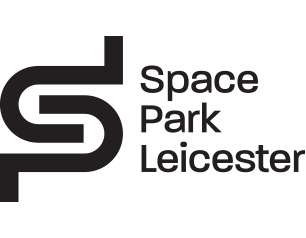Exosens invests £1m to propel space research and innovation for the METEOR programme in partnership with Space Park Leicester

As a pioneer of technology used across the Solar System, Exosens – through its leading brand Photonis – has invested £1 million to advance space research and innovation facilities in collaboration with Space Park Leicester.
Exosens has worked with University of Leicester academics for more than 25 years and more recently it forged a relationship with the university’s science and innovation hub, Space Park Leicester, working alongside it on technology which is being used in some of today’s most exciting space missions.
It has now invested £1 million, through funding and other support, contributing to the creation of a Centre of Excellence in Optics Design and Manufacturing at Space Park Leicester.
This funding will enhance the METEOR space programme which brings together more than 100 researchers and industrial research and development personnel working on Earth observation and the challenges facing the space sector’s evolution.
Dr Adrian Martindale, Head of Space Projects and Instrumentation at Space Park Leicester and a Lecturer in Space Instrumentation at the University of Leicester, said: “Photonis’ technology is the enabler for certain types of scientific instruments and as a result its technology is on lots of space missions and is all over the Solar System. Exosens is supporting us to help develop the quality of the product and the performance of the technology, to push us into the next generation of projects. We have aspirations in space and they have aspirations for a market on the ground and by working together we hope to take both of these things forward.”
Chris Tisse, Chief Technology Officer at Exosens, said: “We are proud to support cutting-edge space research at Space Park Leicester. This significant investment reflects our commitment to advancing the technology that powers groundbreaking space missions and innovation. By working together with the brilliant minds at the University of Leicester, we aim to push the boundaries of what’s possible in both space exploration and Earth-based applications.”
Leicester space academics worked with Photonis on detector systems and together they developed an entirely new X-ray optic.
Photonis’ technology was the cornerstone of Space Park Leicester’s Mercury Imaging X-ray Spectrometer (MIXS) instrument which is on its way to Mercury on the European Space Agency’s BepiColombo mission.
Dr Martindale said: “Photonis’ technology is absolutely crucial to the development of that instrument. Essentially, MIXS will help to measure the X-rays that are emitted from the surface of the planet and by measuring them we’ll be able to figure out what the rocks on the surface are made of. This will tell us how the planet formed and we’ll see whether that fits in with theories about how the Solar System formed.”
The optic Photonis developed with Space Park Leicester has also led to Leicester’s space scientists working on several more significant missions.
These include SVOM (Space-based multi-band astronomical Variable Objects Monitor), which is dedicated to the study of the most distant explosion of stars, and SMILE (Solar wind Magnetosphere Ionosphere Link Explorer) which is a wide-field X-ray telescope that uses micropore optics to spectrally map the location, shape and motion of Earth’s magnetospheric boundaries.
Dr Martindale added: “Photonis’ technology will answer questions about Mercury and as a result questions about planetary science, it will answer questions about astronomy through SVOM and it will answer questions about the Earth through SMILE.”
- To find out more about Exosens and leading brand Photonis, visit https://www.exosens.com/brands/photonis about its pioneering work in space nuclear technology and planetary exploration.
- Find out more about the University of Leicester
Main image: Exosens representatives Amalya Minasyan and Julien Seguy with Space Park Leicester representatives Hina Verma, Charly Feldman and Dr Adrian Martindale


